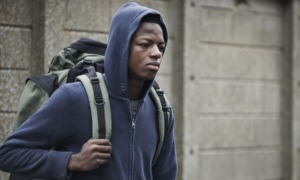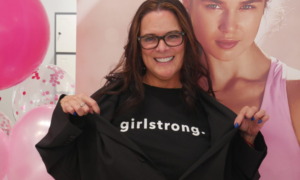“The adults got more out of having the students speak at the conference than the kids themselves.”
So said veteran community organizer Kellye McIntosh, after several presentations by young activists at the national Citizens’ Conference to Stop Gun Violence last February in Arlington, Va. Her observation adds a twist to the movement to get young people more deeply involved in the operation of youth agencies and programs. While such participation clearly helps the development of youth, we’re beginning to see how much it boosts adult development as well.
Meaningful youth involvement addresses common, core problems at youth-serving agencies. The basic problem is that the staff at many organizations has only occasional contact with its constituency. But there’s evidence that when young people are engaged and embedded in the organizational culture, their involvement helps to improve adult morale, commitment and productivity.
Ongoing research by Professor Shep Zeldin of the University of Wisconsin at Madison emphasizes the need for adults to experience the competence of youth first-hand, which helps them perceive young people as legitimate, crucial contributors to an organization. As adults appreciate these abilities and shed their negative stereotypes, they become more willing to team with teens in more significant ways.
In his 2000 report, “Youth in Decision-Making: A Study on the Impacts of Youth on Adults and Organizations,” Zeldin maintains that from these partnerships adults gain a stronger sense of community connectedness, enhancing their commitment and ultimately helping an organization as a whole.
These positive repercussions also are borne out in a 2004 evaluation by Mosaica: The Center for Nonprofit Pluralism. Evaluators studied the Alliance for Justice’s Co/Motion grants, which are designed to spur sustained youth involvement in gun violence prevention.
Several of the grantee organizations reported that the commitment of young people rekindled commitment from adult community members, schools, police departments and other local agencies to refocus on gun violence. A prime example is the Detroit-based Neighborhood Service Organization Youth Initiatives Project (YIP), which is run by youth. YIP’s expansion into different pockets of Detroit, including the hip-hop community, gives law enforcement figures the opportunity “to talk directly to kids,” according to NSO Vice President Bill Weld-Wallis.
Nearly 400 parents and youths turned out for a citywide forum organized by the YIP Steering Committee, a public relations firm and the Skillman Foundation. “I’ve seen adults who are afraid of young people and do lots of profiling. … These forums help adults be brave enough to approach them,” says Marvin Cato of the Detroit Medical Center’s Community Health Initiative, who recently joined the NSO board of directors.
Rebecca Thoman, executive director of Citizens for a Safer Minnesota, says her agency’s youth group, called GUN-SHY, has “reinvigorated the staff,” especially with the agency’s production of videos about the federal assault weapons ban and about conceal-and-carry legislation.
Other statewide grassroots organizations credit youth members with increasing the number and variety of program activities, which has helped them attract broader segments of the population.
Adult reaction to re-ACT-ion, the youth initiative of New Yorkers Against Gun Violence Education Fund, has been so positive that the youth program is “a permanent part of our organization,” says Executive Director Andy Pelosi.
One 19-year-old, a volunteer for the past three years, has been hired to help re-ACT-ion recruit more at-risk youth. Pelosi says the youths work on specific community projects and get “folded into all our other events,” such as a lobbying day in the state capital, when half of the 100 gun control advocates who met with state legislators were youths.
A newfound optimism crops up when talking with battle-weary adults at these organizations. Thoman says youths persuaded her board to seek grants to sustain GUN-SHY. Cato, who admits to bouts of burnout in Detroit, relishes the notion that another generation is moving up to take his place.
Some recent research by Zeldin, conducted in Washington, D.C., and a rural Wisconsin community, yanks us back to a gloomier picture. He found that only 3 percent of adults in the communities think they are in touch with the feelings and attitudes of teenagers. “Adults see teenagers as alien – a foreign species,” Zeldin says.
That’s reason enough for every organization to invest time and money to increase opportunities for intergenerational collaboration. Not only does it boost positive youth development, but it also helps grown-ups continue to grow. Contacts: Alliance for Justice (202) 822-6076, www.afj.org; Citizens for a Safer Minnesota (651) 645- 3271,www.endgunviolence.com; Neighborhood Service Organization (313) 965-6924, www.nso-mi.org; New Yorkers Against Gun Violence Education Fund (212) 679-2345, www.nyagv.org; Shep Zeldin, rszeldin@facstaff.wisc.edu.
Wendy Lesko is director of the Youth Activism Project.































